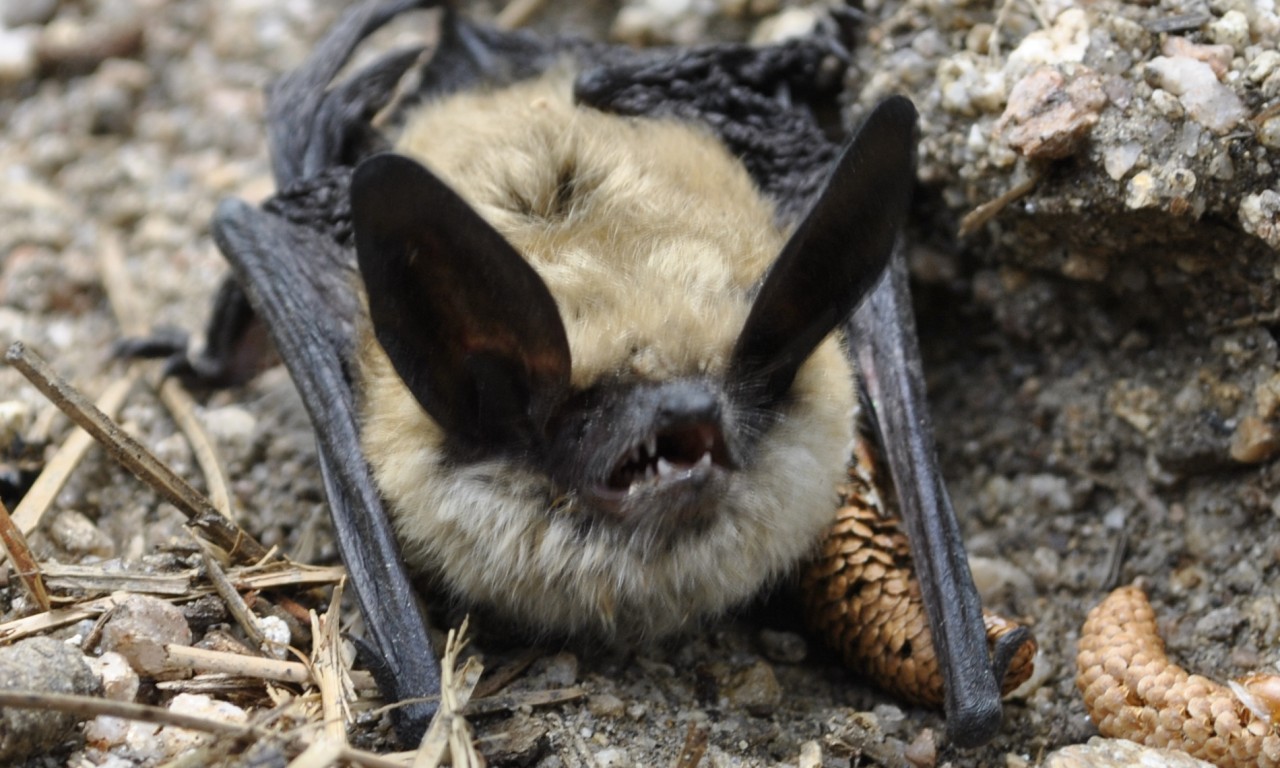The Boulder County Parks and Open Space Department offers grants for research on county open space lands each year. All proposals are reviewed by a team of resource specialists, and awarded research projects are monitored during their activities on open space. The following is a summary of a 2013 study conducted by Taylor Crow and Kristina Hufford from the University of Wyoming. Their project investigated mountain mahogany establishment.
The following is a summary of a 2014 study conducted by Rick Adams of School of Biological Science, University of Northern Colorado. His project focused on the effects on bats of forest structure changes caused by fire and human manipulation, dietary and heavy metal contaminant analyses.
Abstract
In 2014 we worked at Heil Valley Ranch and Hall II properties owned by Boulder County Parks and Open Space. We mist netted and used SM2BAT+ and EM3 sonar recorders to quantify bat foraging patterns. For the third year were gathered sonar calls from the Overland Burn area, Geer and Plumely canyons, and thinned area near Ingersol Quarry and more than 25 sites at Hall II property. We captured 74 bats of seven species at 14 netting sites distributed across Heil Valley Ranch and Hall II properties and gathered more than 40,000 sonar call sequences. The foraging activity of bats at the Overland Burn sites were similar to that found in 2012 and 2013. The flood of September 2013 had major effects on both Geer and Plumely canyons resulting in a very large number of drinking pools established in each canyon. In Geer Canyon, bat activity increased by 45%, whereas in Plumely Canyon bat activity increased by greater than 75%. For the first time ever since working in Plumely Canyon, we heard and recorded audible communication calls between individuals of the Mexican free-tailed bats indicating that a colony of this species has taken up residence in the area. We also heard and recorded these communication calls at Hall II property. We continue to record definitive sonar calls of tricolor bats (Perimyotis subflavus) at Hall II, but have not been able to capture any individuals. The most common species recorded at Hall II property were hoary bats (Lasiurus cinereus), small-footed myotis (Myotis ciliolabrum) and little brown myotis (Myotis lucifugus). A large maternity colony of M. lucifugus was found along the St. Vrain Canyon from an individual radio-tagged at Hall II property. Although this colony does not roost on Hall II property, this location provides a major drinking site and foraging areas for this species. In fact, the large maternity colony drank from the Pool 1 site in the gravel pit. Three sites tested in the gravel pit showed relatively high levels of dissolved calcium. Although the M. lucifugus maternity colony drank from Pool 1 which had the lowest dissolved calcium (although still higher than other sites tested), Pool 1 also had the least amounts of potentially harmful chemical compound load.
Conclusions
All four of my hypotheses were supported. Bats showed a increase in activity based upon sonar call recording in both canyons. Plumely Canyon, a normally dry canyon, showed a significant increase in activity. Geer Canyon also showed a large increase in activity, but the change was not significant due to high variation in nightly activity patterns. In both canyons, activity by MYCI and MYLU doubled or tripled. Species Evenness increased in Geer Canyon in 2014, but was highly variable over the years in Plumely Canyon, including in 2014. Assemblage structure shifted with increases in some species and decreases in others. Thus changes in water availability appear to have significantly positive effects on bat activity. Because the West is cited to become hotter and drier with increases in the frequency of severe droughts, providing water for bats near roost sites may be a way to mitigate some of the effects of climate disruption on local and regional bat populations. Future study will look for further changes and stabilization around a new normal.


